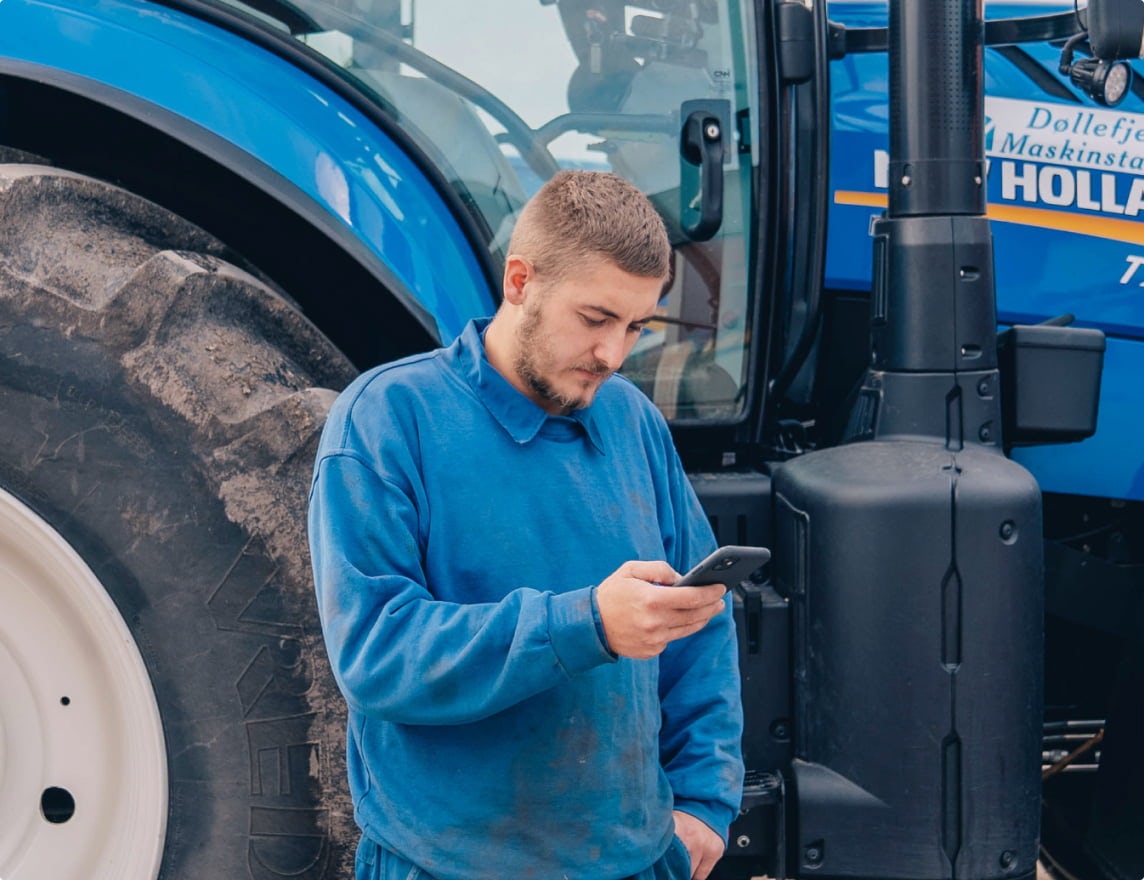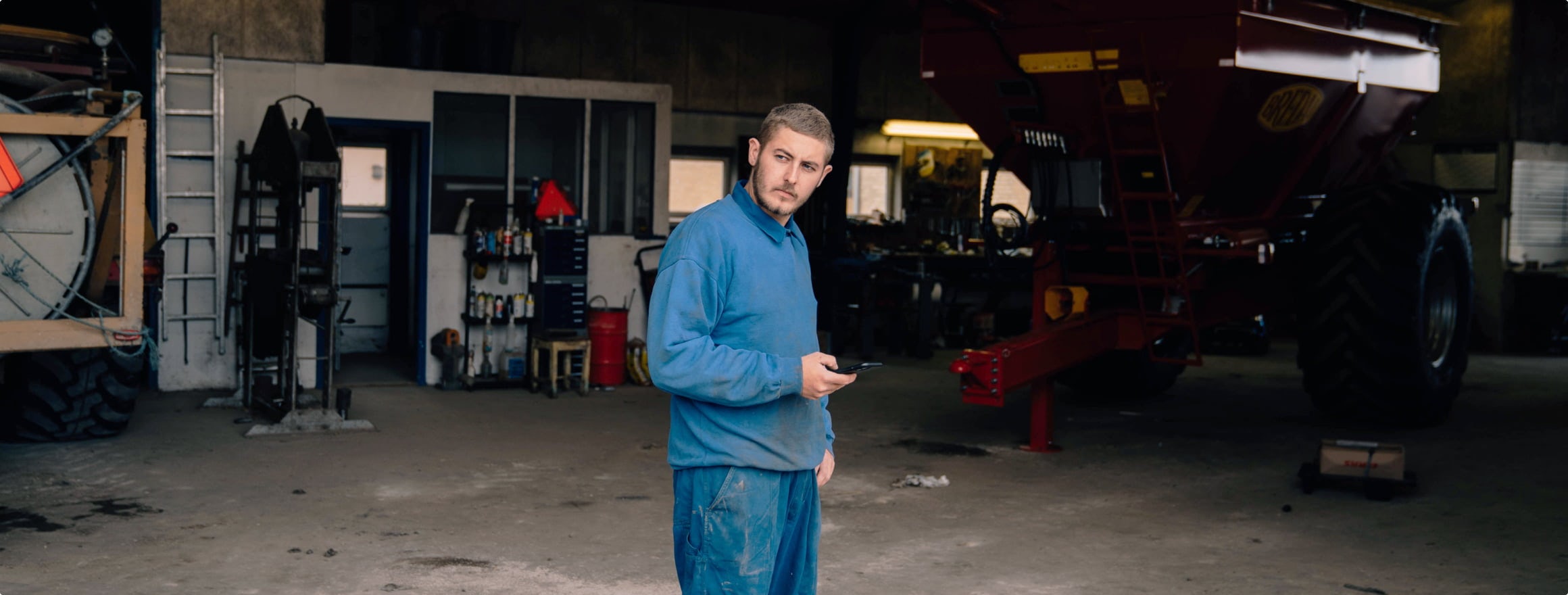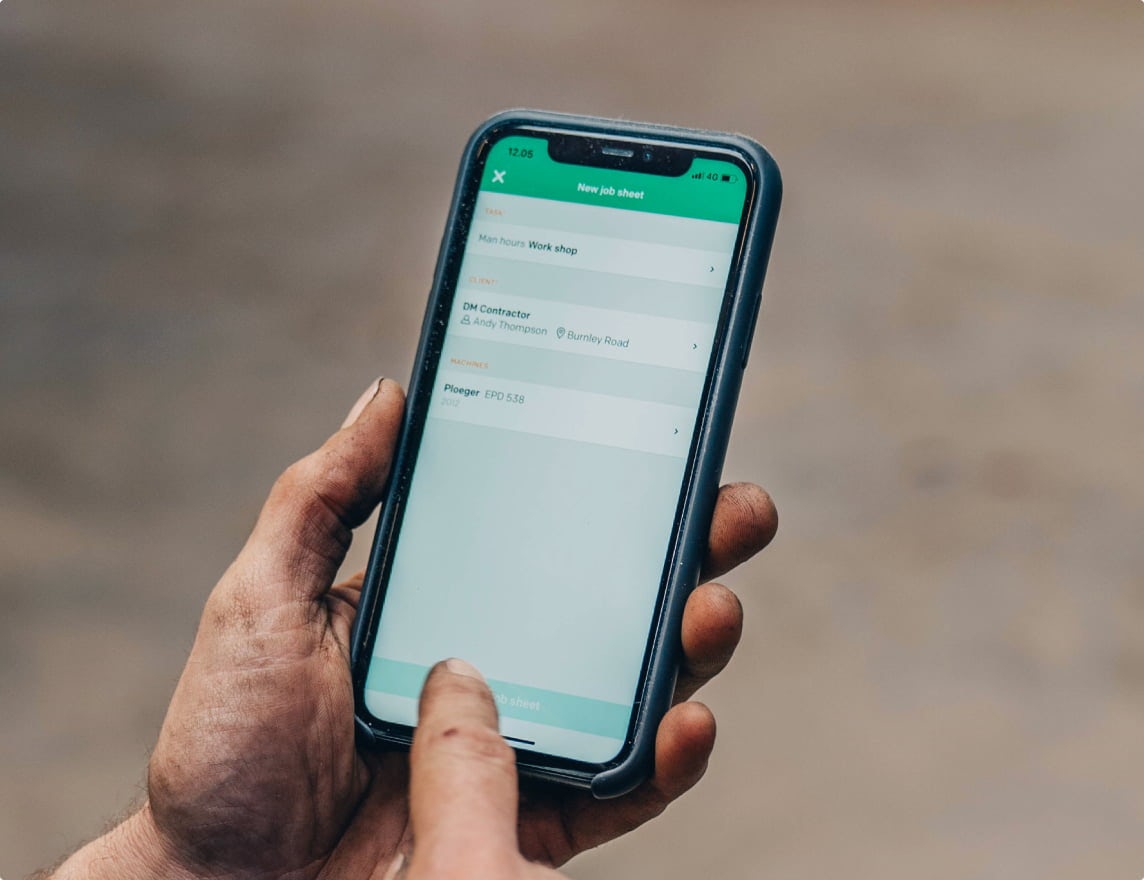Health and safety checks
The checklist feature can be used for multiple purposes, depending on your needs. As part of the feature, you are also allowed to report issues if anything wrong is identified when completing the checks.
Machine (pre-start-safety) check
Applying a checklist to a machine is beneficial in terms of human safety and the machine's health. Depending on how you decide to customise the feature, the safety check can either be performed as a stand-alone activity or as part of the flow of starting a job sheet. Adding it as part of the job sheet flow will significantly increase the likelihood of completing the check compared to solutions offering this feature as a stand-alone service.

Daily work checklist
Adding a checklist to a specific task can, in some use cases, make sense. It could be the daily routine of taking care of the pigs, cows or chickens, where a checklist will be a great support to ensure that you have remembered to complete all tasks, e.g. “Is ventilation working correctly?” or “Did you remember to turn on the heat lamps?”.

Site hazard checklist
Working in environments where the likelihood of hazards is high, a site hazard checklist is a way forward. You might receive a document from a client explaining to look out for powerlines, larger holes in the ground or slippery dirt roads. Turning these guidelines into a site hazard checklist will ensure that you keep your employees safe when working in high-risk environments.

Create issue
Going through a checklist, you might run into issues now and then. In those cases, you have the option to alarm everyone about a potentially critical issue. Once an issue is created, it is visible to everyone until solved.
Example: While checking the tractor, it was detected that the left-back tire was losing pressure. This issue must be fixed before the tractor can once again be operated safely.

Other features
Get in touch
Contact us or book a demo to hear more about our products and services.
